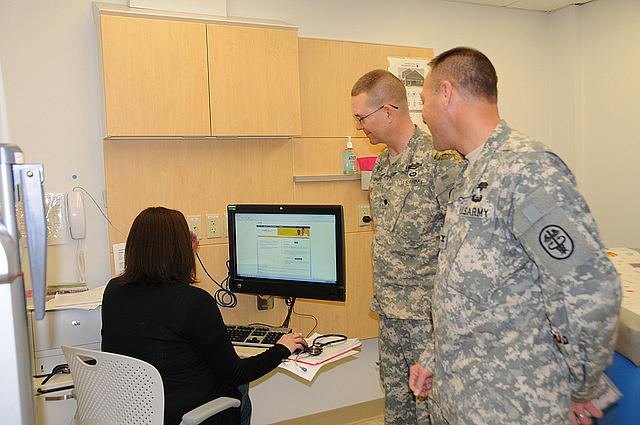Are we bidding goodbye to the thoughtful primary care doctor?

Are checkboxes taking doctors' attention away from what really matters in a visit?
Recently, a friend of mine had a checkup with his primary care doctor, a university-affiliated physician in a satellite family medicine office. He marveled at how quick and focused the visit was. “She just ran straight down the list … checked off whether I had been depressed, whether my smoking history had changed. I was in and out of there.”
This doctor is a dream come true for any large health care organization. She’s checking off all of the little boxes in her electronic health record that generate revenue. This program, called Meaningful Use, is supposed to provide a guide and incentives for doctors who receive Medicare and Medicaid (Medi-Cal in California) payments. Penalties ensue if doctors do not do certain things during a certain percentage of their visits, such as record smoking status. Some health care organizations dock pay to doctors if they aren’t documenting this in enough visits. As one can imagine, those checkboxes are constantly on doctors’ minds, even if the patient isn't necessarily a Medicare patient. It’s certainly a shift in focus for the typical doctor visit.
With Meaningful Use, there are many details to be concerned with and document in a patient visit, all of which are important, but these don’t always relate directly to the issue for which the patient is being seen. The emphasis on smoking status and running through a patient’s medication list can be great opportunities to educate a smoker or avoid a drug interaction. But the new requirements, plus the extended time required to click through the electronic medical records software, eat up some of that 15-minute appointment slot. As a result, actual doctoring — diagnosing, examining, explaining — can suffer.
When I worked in a busy community clinic, I sometimes had 15-minute slots allotted for a full physical and history on a brand-new patient with multiple medical problems who spoke only Spanish. For these patients, I had to tell them to book a series of appointments, often over the course of a few months, to address all of their medical issues. It seemed wrong, and it could be difficult to choose what to address first. Tweak the heart failure meds or discuss a new diet plan for the diabetes? I knew I could give better care, comprehensive, integrated care, but the requirements of the checkboxes and the ticking clock made that nearly impossible. Sometimes, the root of a person’s problem or a key fact (grandma’s special chicken contains a vat of salt and is grandpa’s favorite heart-failure-inducing midnight snack) would only come to light after several visits.
At another clinic, I spent a lot of time printing out patient summaries since they were a Meaningful Use requirement. But they were mostly not given to patients, since patients generally left the building before their charts were completed. The practice just wanted the software to register the document as “printed” so that they could hit their marks.
Getting “in and out” is great for practice efficiency and gets a patient with a simple problem his prescription or recommendation so that he can go back to a busy life. But the continued incentivizing of checklists and speed has made thoughtful, determined doctors — the brilliant diagnosticians — more difficult to find. It is the patients with multiple medical problems, or with tricky and unusual mystery diseases who most need these doctors. A skilled primary care doctor, one who has good hunches and the time and energy to act on them, can save a patient months or years of bouncing around urgent cares, ERs, and the wrong specialists, with the wrong diagnosis — or no diagnosis at all. These are the doctors who clean up medication lists, educate patients on self-care, and who are loved by their patients. Faced with a system that increasingly rewards other things, many primary care doctors are quitting or ending up in pricey concierge medicine.
When my friend described his doctor visit, I pictured a glassy-eyed woman in a white coat, typing as fast as she could, back straight, eyes fixed on the pixels of her Dell monitor. I hope that this image is not the future of medicine, because patients need more.
[Photo by Fort Rucker via Flickr.]

